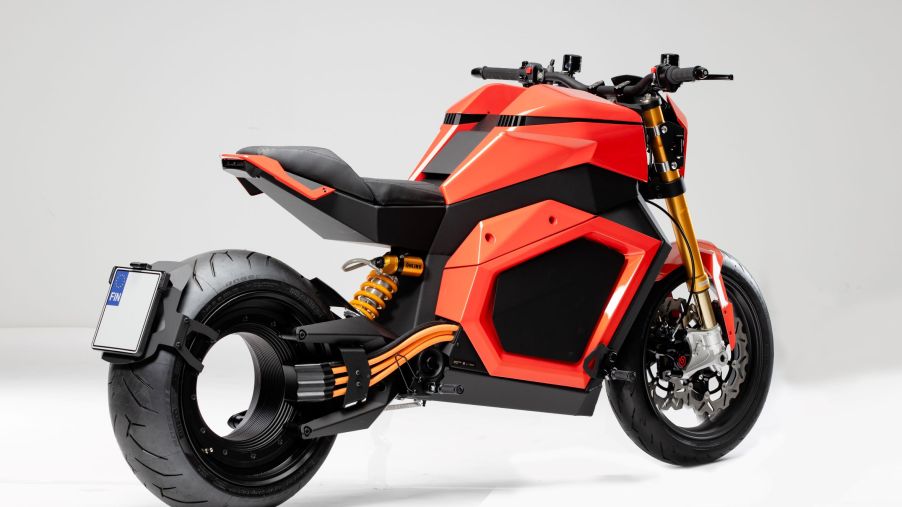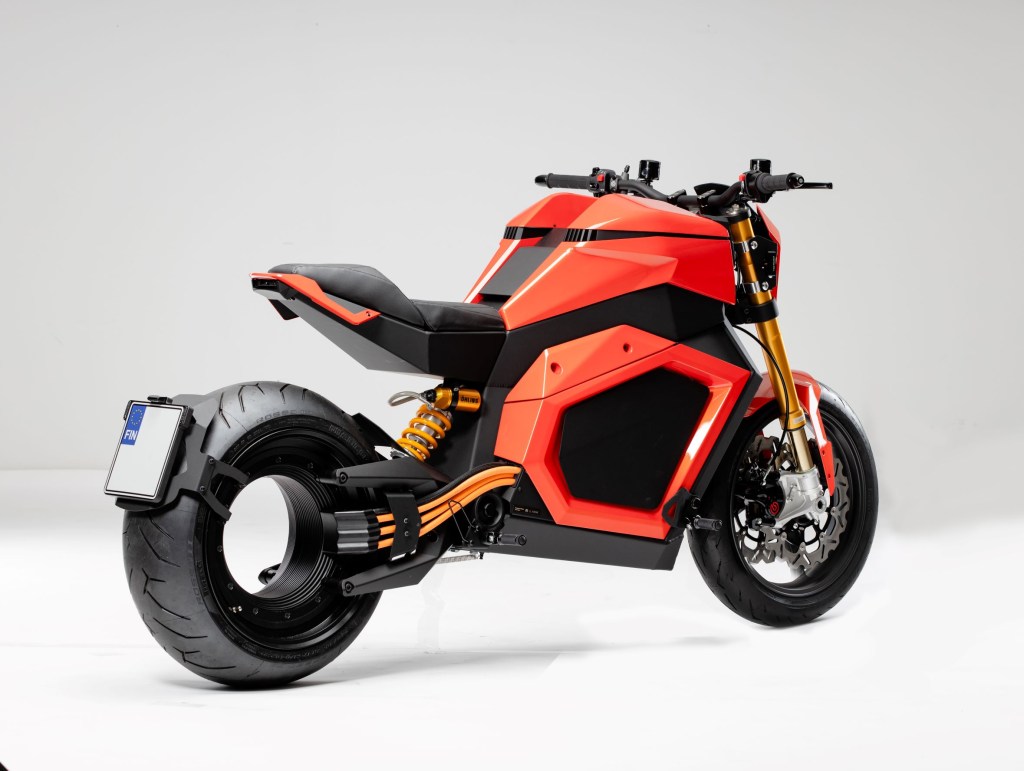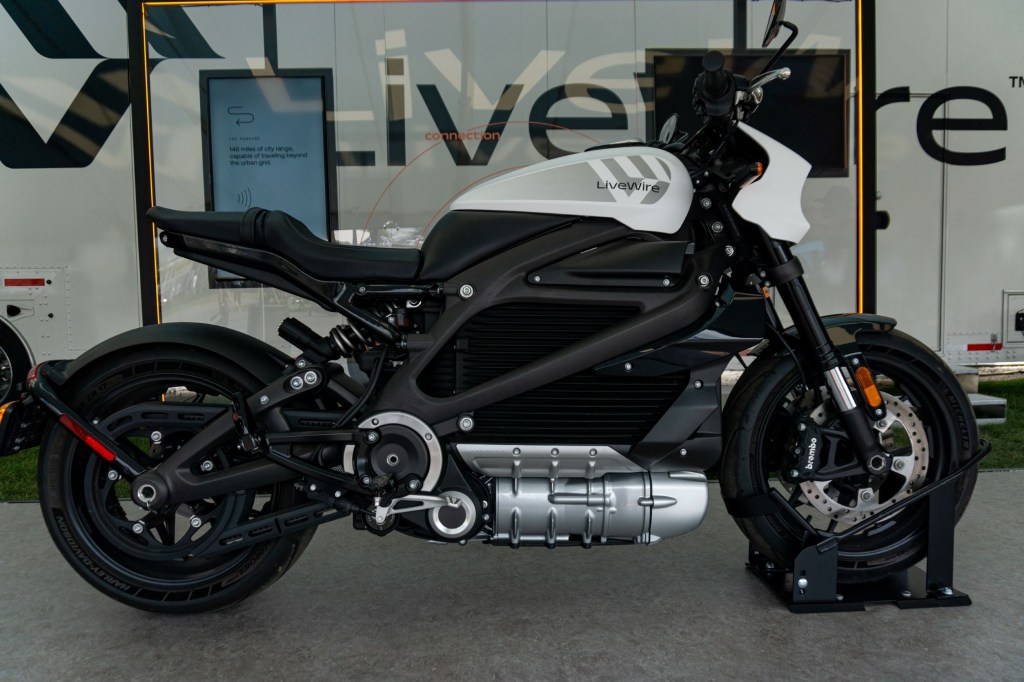
Remember the Hubless Verge TS Electric Motorcycle? It’s Almost Here
Although automakers sometimes release near-production-spec cars, electric and otherwise, as ‘concepts,’ the truly wild ones rarely make it into consumers’ hands. And this often occurs in the electric motorcycle world, too. But occasionally, an unconventional idea goes the distance. And the Verge TS, with its one brake and hubless wheel, is about to do just that.
The Verge TS electric motorcycle is going into production, hubless rear wheel and all

If you’re a Tron: Legacy fan, you likely remember the movie’s high-tech light cycles with their large wheels. Wheels that, while they spun conventionally, weren’t connected by a chain, belt, or driveshaft to an engine or motor. However, these hubless wheels aren’t science fiction. Franco Sbarro—the founder of Swiss automaker Sbarro—created the first practical examples in 1989, which used large circular bearings to rotate tires.
Since then, a handful of companies have tried to tweak and improve the idea. And in 2019, a Finnish company named RMK showed off an electric motorcycle concept, the E2, that featured a hubless rear wheel. Only instead of spinning a bearing with a motor, the E2’s wheel spins through the repelling forces generated by its rim-mounted electromagnets, MCN explains. While the hubless design makes the wheel heavier and requires wide tires, the trade-offs are no maintenance and greater power transfer efficiency. Both are major electric motorcycle selling points. Plus, because the hubless design functions like regenerative braking, the TS doesn’t require a rear brake, further decreasing maintenance requirements.
Shortly after the E2’s debut, RMK rebranded into Verge Motorcycles. Then, several months later, it displayed an updated version of its concept, the TS, at EICMA 2019. At the time, Verge claimed its bike would go on sale in 2020, Cycle World reports. But while the pandemic undoubtedly shifted plans around, the TS wasn’t canceled.
Two years later, the Verge TS is heading to production and the company is accepting pre-orders, RideApart says. And it looks essentially the same as the 2019 concept—hubless rear wheel and all.
While that fancy rear wheel hasn’t changed, the Verge TS has gotten some tech upgrades
However, while the Verge TS’s overall design hasn’t changed, some of its features have. As before, the bike makes 107 hp and 737 lb-ft of torque at the rear wheel. That distinction is necessary because, unlike non-electric motorcycles, the TS doesn’t have a transmission to multiply its motor’s torque. But it’s still enough to let the sub-500-lb bike go 0-62 mph in under four seconds.
Though the Verge TS’s motor specs haven’t changed, its electrical system has. As of this writing, Verge hasn’t released details about its bike’s battery capacity. However, the Finnish company claims the TS can go up to 124 miles on the highway or 186 miles in the city. And hooking it up to a DC fast charger adds 62 miles of range in just 15 minutes. But even if you don’t use a Level 3 charger, Verge says the TS recharges fully in four hours.
In addition, the Verge TS comes with BST wheels, dual front Brembo brakes, and Ohlins suspension, MCN reports. The electric motorcycle also comes with a full-color TFT display embedded in the tank area. And while the TS is often shown in orange, there are other colors available.
How much does this electric bike cost?

The Verge TS starts at roughly $29,300; and if you want to pre-order it, there’s a roughly $2350 deposit. Verge says deliveries should begin next year.
Admittedly, a near-$30K sticker price is rather expensive for a motorcycle, electric or otherwise. It was a sticking point for the Harley-Davidson LiveWire before it got a new name and lower price as the LiveWire One. And speaking of the One, it and one of its closest rivals, the Zero SR/F are $7000-$8000 cheaper than the TS. Plus, they’re available today.
That being said, neither the One nor the SR/F offer 186 miles of range in the city. Nor do they offer hubless rear wheels. To be fair, it’s difficult to tell without riding a production-spec Verge TS if its design’s claimed benefits translate to the real world. But then, how often does any OEM make something that looks even a little like a light cycle?
Follow more updates from MotorBiscuit on our Facebook page.


